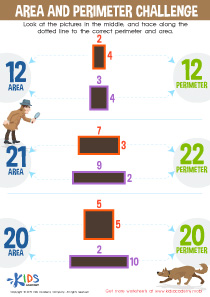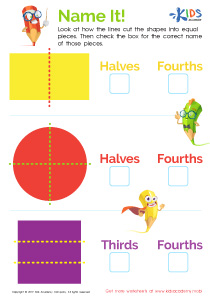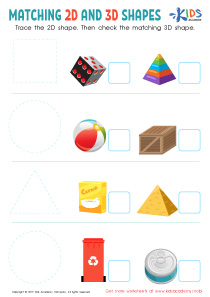Visual discrimination 2D Shapes Worksheets for Ages 3-9
5 filtered results
-
From - To
Enhance your child's visual discrimination skills with our 2D Shapes Worksheets designed for ages 3-9. These engaging, age-appropriate activities help young learners identify, match, and differentiate between various shapes. Perfect for both classroom and home use, our worksheets boost critical thinking and visual perception through fun, interactive exercises. These resources are ideal for fostering an early understanding of geometry while maintaining a playful approach to learning. Empower your children with the tools they need for academic success by incorporating our expertly crafted worksheets into their daily routine. Discover the joy of learning with Kids Academy today!
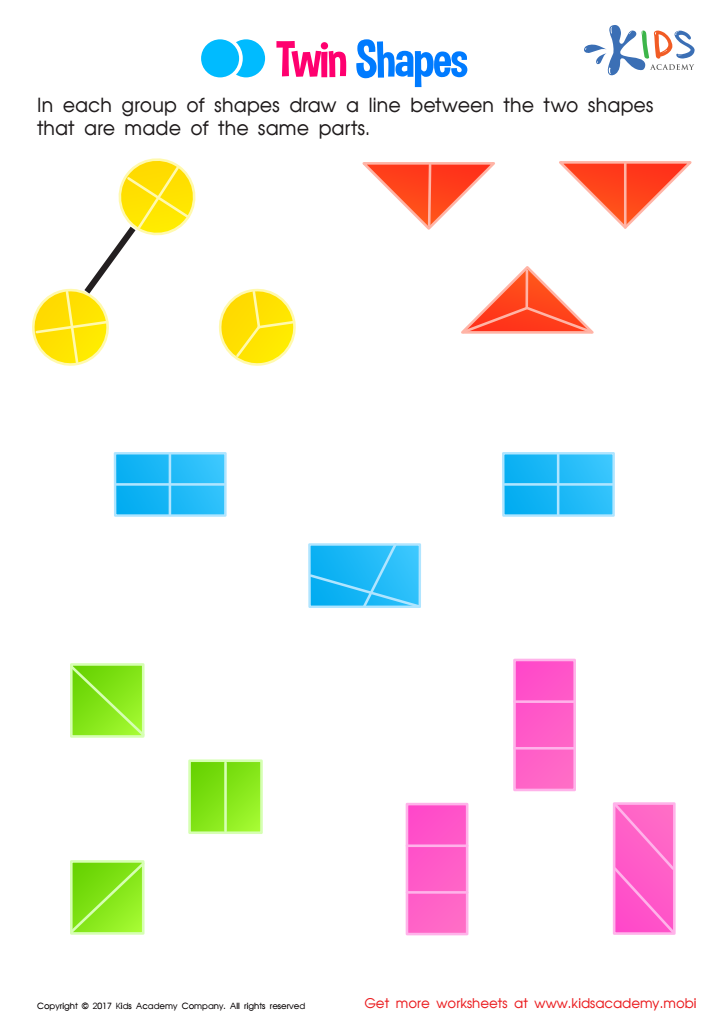

Twin Shapes Worksheet
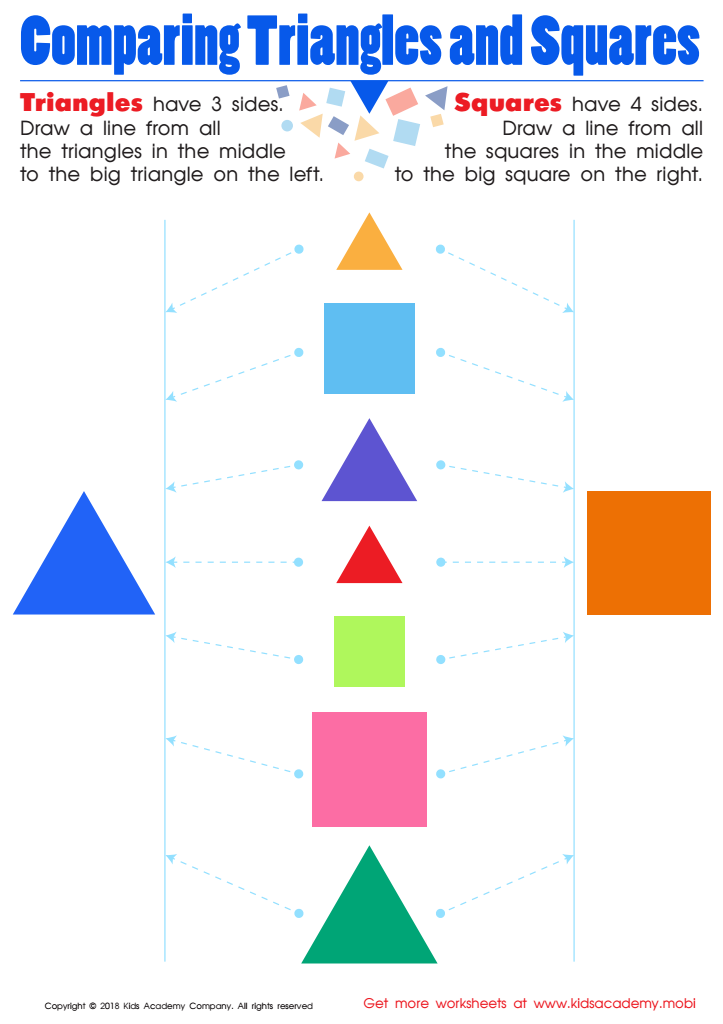

Comparing Triangles Squares Worksheet


Congruent Shapes Worksheet
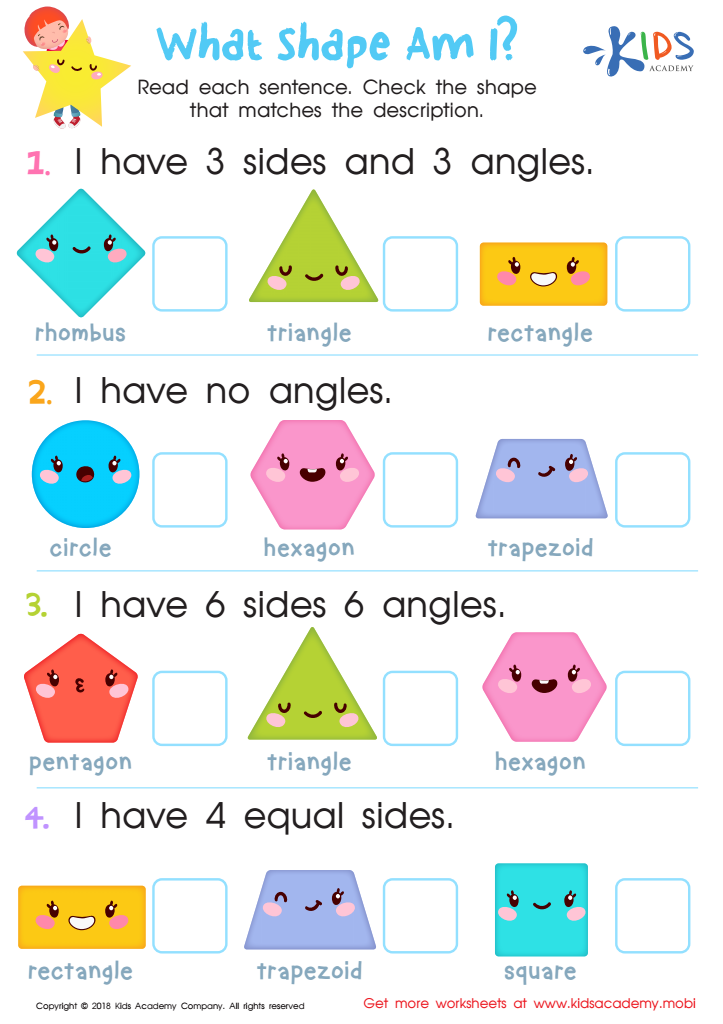

What Shape Am I? Worksheet
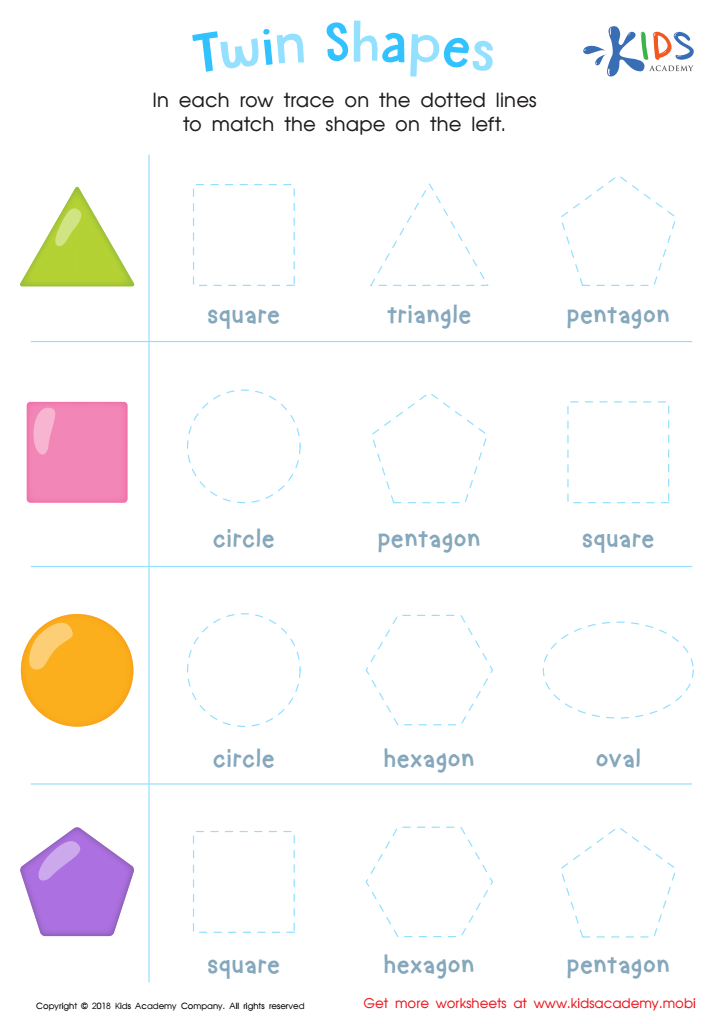

Twin Shapes Dot-to-Dot Worksheet
Visual discrimination skills are vital for children's overall cognitive development, particularly when discussing the recognition and understanding of 2D shapes for ages 3-9. Parents and teachers should focus on nurturing this skill because it forms the foundation for advanced learning and everyday functioning.
Firstly, visual discrimination enables children to identify differences and similarities in shapes, which is crucial for distinguishing letters and numbers. This recognition directly influences reading and math skills, contributing to academic success. A child proficient in visual discrimination can easily differentiate between 'b' and 'd' or '2' and '5,' thereby minimizing reading difficulties and enhancing mathematical understanding.
Secondly, understanding 2D shapes fosters spatial awareness, helping children grasp the relationships between objects in their environment. This spatial awareness translates into improved problem-solving abilities and logical thinking, which are essential life skills.
Moreover, engaging with 2D shapes can enhance fine motor skills. Activities like drawing, cutting, or tracing shapes refine hand-eye coordination and control, which are needed for writing and other manual tasks.
Lastly, learning shapes is often a child's first introduction to geometry. This early exposure builds a groundwork for future complex mathematical concepts, making learning smoother and more intuitive.
In essence, developing visual discrimination skills concerning 2D shapes not only supports academic achievement but also everyday practical abilities, making it a critical aspect of early childhood education.
 Assign to My Students
Assign to My Students













